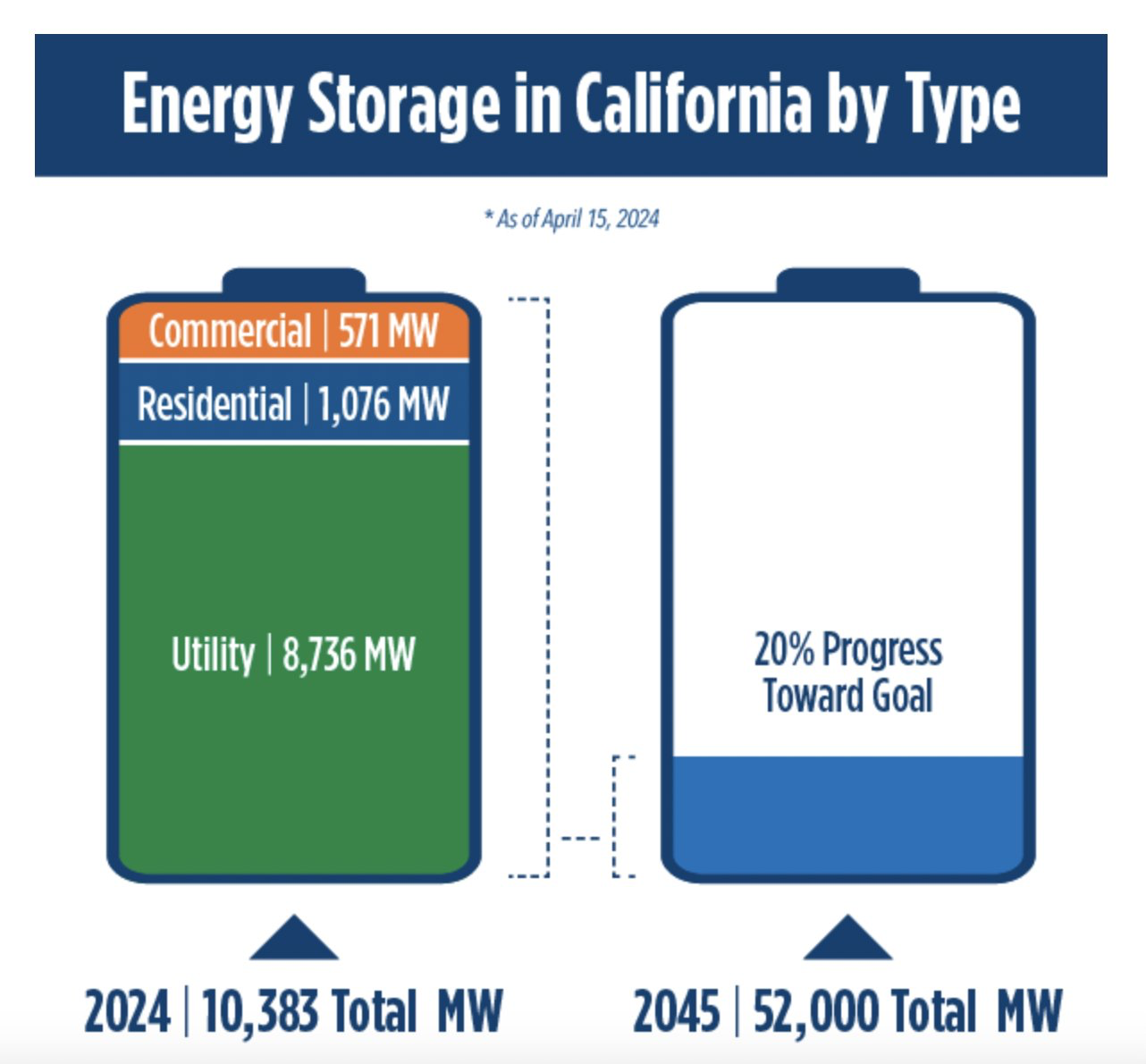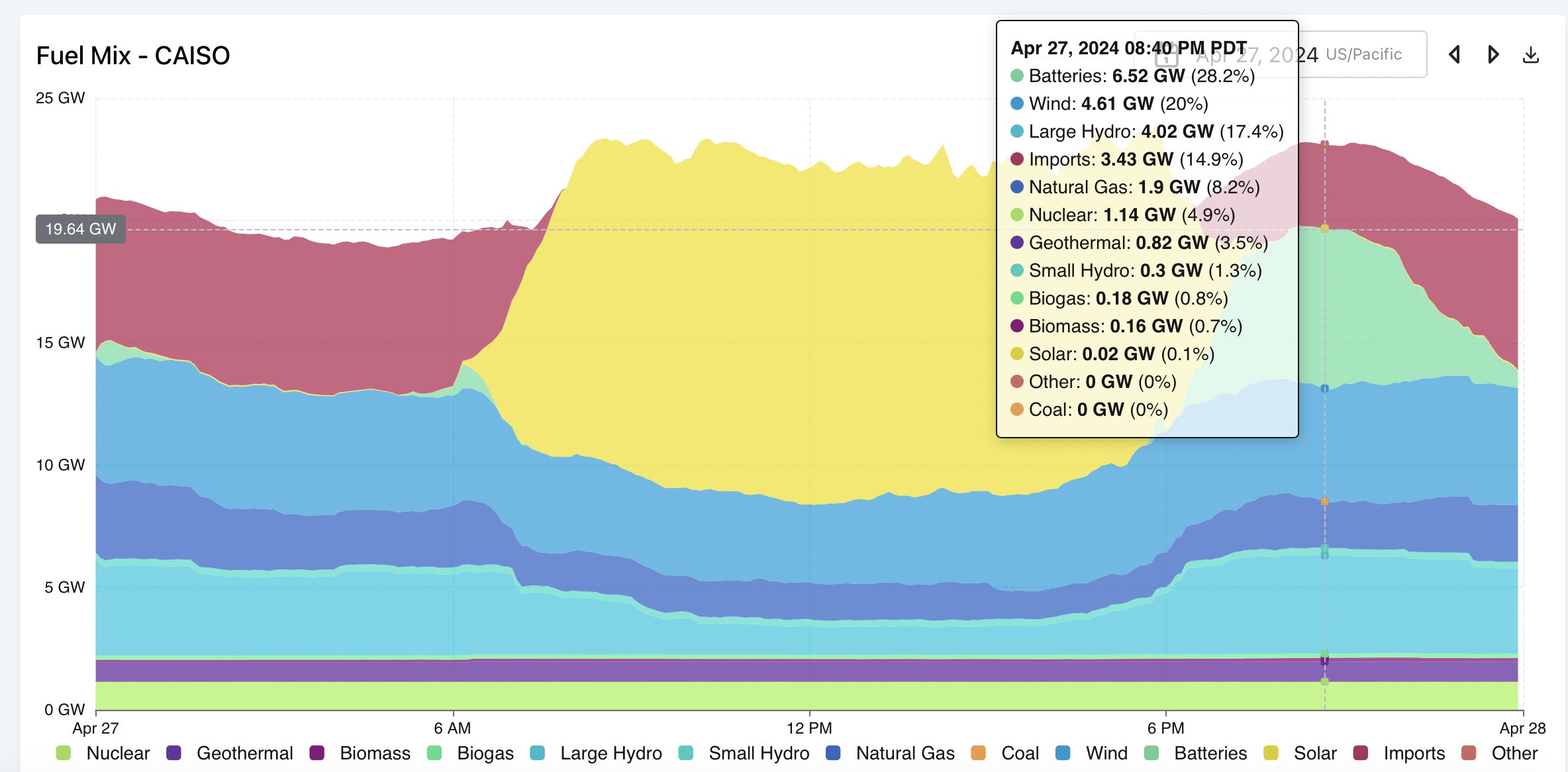California announced that they’ve crossed the line of having 10 GW of energy storage installed on its power grid. As of the announcement, the state had noted that exactly 10.379 gigawatts of output was connected, which was an increase from 770 megawatts that was connected in 2019.

The state projects that it’ll need 52 GW of batteries connected to its grid by 2045. Along with an additional 57.5 GW of solar, state models suggest an additional 15.7 GW of four hour lithium ion batteries, and 19.5 GW of eight hour lithium ion batteries. Additional pumped hydro and long duration energy storage are also considered, however, in the models the volumes projected for now are low.
While the press release, and generally available public data, does not release data on the amount of hours that these systems would output, one can roughly estimate the hours based upon state standards, and general industry hardware standards.
The state has installed 154,155 total energy storage systems as of April 15th. Of those, just over 98% are residential systems totaling 1.076 GW of output capacity. Of the remaining, 2,777 are commercial systems, while 175 are directly grid connected utility scale facilities.

For the residential and commercial systems, totaling 1.647 GW, the general industry standard is to install from two to four hours of storage capacity behind the output capacity. If we estimate an average of three hours per output megawatt, then 4.951 GWh of storage may be available behind these units.
In California, because of policy, most utility scale batteries are four hours – suggesting the state’s 8.736 GW of out capacity has 34.944 GWh of storage behind them.
In total, 39,895 GWh of energy storage was connected to the grid as of a couple of weeks ago.
More significant than the capacity value though, is what the batteries are doing.
In 2019, California knew it had a challenge: fossils were retiring & evening peak periods were power failure prone. The state saw a need for <4.7 GW of power to handle these periods by 2022, and so implemented plans to deploy energy storage plus additional solar to fill up these batteries.

This spring, we’ve seen batteries do exactly what they were design to do – take over the evening peak periods.
For instance, on April 27th at 8.40 PM PST, utility scale batteries were outputting over 6.5 GW of power – the largest source of electricity by far. There were multiple hours when the batteries were the largest source as well.
An additional 8 GW of energy storage is expected to be deployed in the next year.
This content is protected by copyright and may not be reused. If you want to cooperate with us and would like to reuse some of our content, please contact: editors@pv-magazine.com.








Hi John, good stuff as usual. Could you explain the difference between a four hour lithium ion battery and an eight hour lithium ion battery? Thanks.
Hello Dr, nice to talk again –
Only difference is more battery cells (2X more in the case of 4 hr vs 8 hr) behind the same sized inverters. Other than additional containers holding battery cells, same everything else, .
You could also run an inverter at a 50% lower output amount to effectively get 8 hours of use out of a battery “4 hour battery” – but when we’re talking utility scale, the interconnection is usually chosen and maximized because there’s lots of cost/value/risk associated with picking the right grid size connection.
Thanks John. This has been bugging for awhile. It makes sense now.
Why can’t the state publish WattHours figures instead of just Watts?
Because that would be honest, and the purpose of only publishing power numbers is to deliberately mislead the public. Publishing battery capacity in MW or GW, instead of MWh or GWh, is like saying the fuel tank capacity of a car with a 10 gallon tank is 100 gallons per hour. It makes it sound more impressive.
It’s an easy, sleazy way to inflate the numbers.